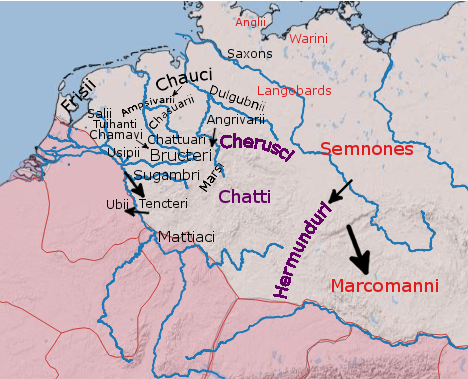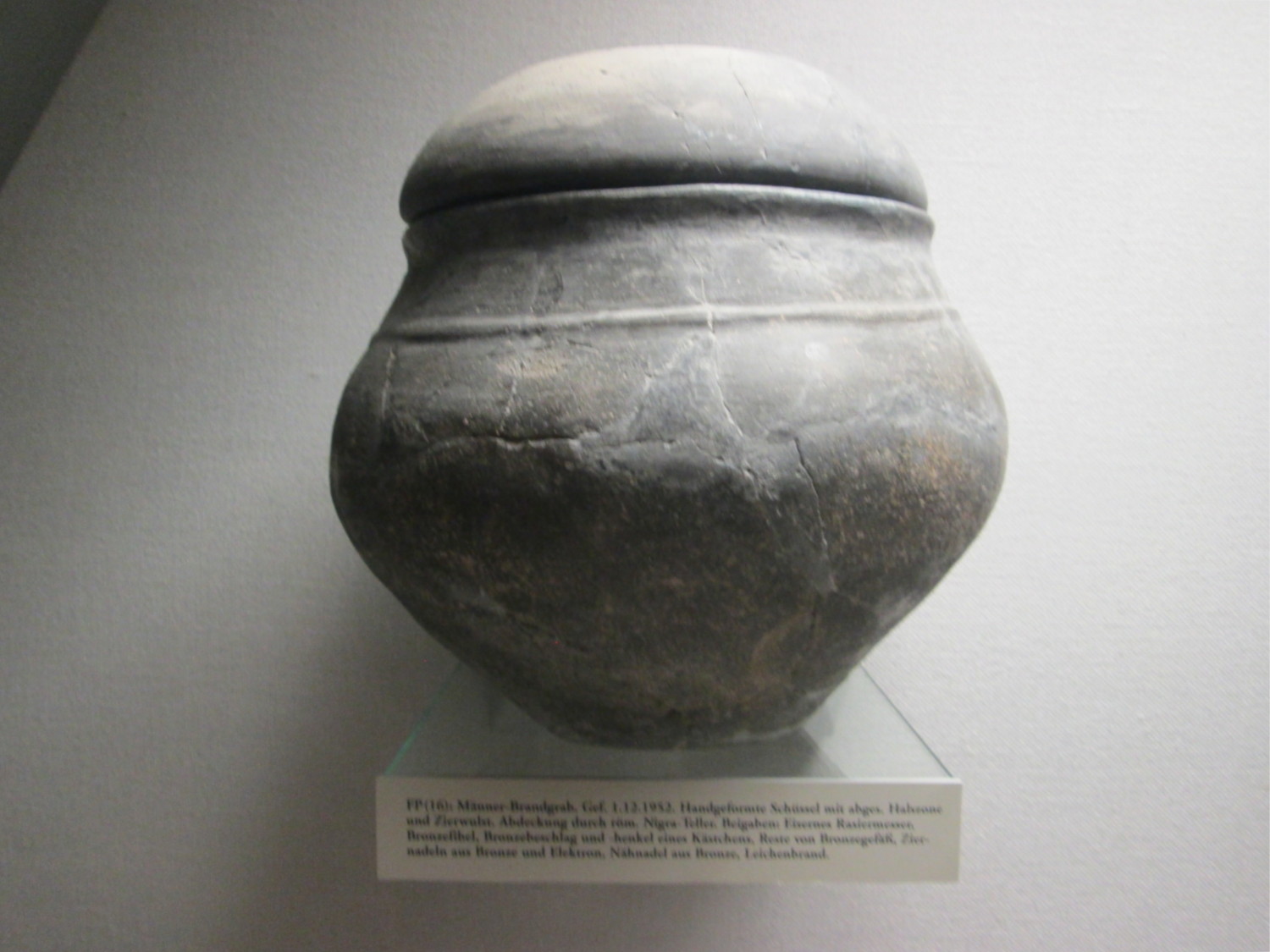|
Masyas
Masyas, Masyus or Masyos () was a King of the Semnones () in the 1st century. The Semnones were a Germanic tribe, part of the Suebi. Cassius Dio writes that he at one point visited Roman emperor Domitian along with the priestess Ganna. Sources * Felix Dahn: Masyos. In: Allgemeine Deutsche Biographie (ADB; ) is one of the most important and comprehensive biographical reference works in the German language. It was published by the Historical Commission of the Bavarian Academy of Sciences between 1875 and 1912 in 56 volumes, printed in Lei ... (ADB). Band 20, Duncker & Humblot, Leipzig 1884, S. 581. 1st-century Germanic people Suebian kings {{Europe-royal-stub ... [...More Info...] [...Related Items...] OR: [Wikipedia] [Google] [Baidu] |
Ganna (prophet)
Ganna () was a Germanic seeress (also called ''priestess''), of the Semnoni tribe, who succeeded the seeress Veleda as the leader of a Germanic alliance in rebellion against the Roman Empire. She went together with her king Masyus as envoys to Rome to discuss with Roman emperor Domitian himself, and was received with honours, after which she returned home. She is only mentioned by name in the works of Cassius Dio, but she also appears to have provided posterity with select information about the religious practices and the mythology of the early Germanic tribes, through the contemporary Roman historian Tacitus who wrote them down in ''Germania''. Her name may be a reference to her priestly insignia, the wand, or to her spiritual abilities, and she probably taught her craft to Waluburg who would serve as a seeress in Roman Egypt at the First Cataract of the Nile. Ganna and the other Germanic seeresses served an important political role in Germanic society, and the Romans al ... [...More Info...] [...Related Items...] OR: [Wikipedia] [Google] [Baidu] |
Semnones
The Semnones were a Germanic and specifically a Suebi people, located between the Elbe and the Oder in the 1st and 2nd centuries AD. They were described in the late 1st century by Tacitus in his ''Germania'': "The Semnones give themselves out to be the most ancient and renowned branch of the Suebi. Their antiquity is strongly attested by their religion. At a stated period, all the tribes of the same group assemble by their representatives in a grove consecrated by the auguries of their forefathers, and by immemorial associations of terror. Here, having publicly slaughtered a human victim, they celebrate the horrible beginning of their barbarous rite. Reverence also in other ways is paid to the grove. No one enters it except bound with a chain, as an inferior acknowledging the might of the local divinity. If he chance to fall, it is not lawful for him to be lifted up, or to rise to his feet; he must crawl out along the ground. All this superstition implies the belief that from thi ... [...More Info...] [...Related Items...] OR: [Wikipedia] [Google] [Baidu] |
Germanic Peoples
The Germanic peoples were tribal groups who lived in Northern Europe in Classical antiquity and the Early Middle Ages. In modern scholarship, they typically include not only the Roman-era ''Germani'' who lived in both ''Germania'' and parts of the Roman Empire, but also all Germanic speaking peoples from this era, irrespective of where they lived, most notably the Goths. Another term, ancient Germans, is considered problematic by many scholars since it suggests identity with present-day Germans. Although the first Roman descriptions of ''Germani'' involved tribes west of the Rhine, their homeland of ''Germania'' was portrayed as stretching east of the Rhine, to southern Scandinavia and the Vistula in the east, and to the upper Danube in the south. Other Germanic speakers, such as the Bastarnae and Goths, lived further east in what is now Moldova and Ukraine. The term ''Germani ''is generally only used to refer to historical peoples from the 1st to 4th centuries CE. Different ac ... [...More Info...] [...Related Items...] OR: [Wikipedia] [Google] [Baidu] |
Suebi
file:1st century Germani.png, 300px, The approximate positions of some Germanic peoples reported by Graeco-Roman authors in the 1st century. Suebian peoples in red, and other Irminones in purple. The Suebi (also spelled Suavi, Suevi or Suebians) were a large group of Germanic peoples originally from the Elbe river region in what is now Germany and the Czech Republic. In the early Roman era they included many peoples with their own names such as the Marcomanni, Quadi, Hermunduri, Semnones, and Lombards. New groupings formed later, such as the Alamanni and Bavarians, and two kingdoms in the Migration Period were simply referred to as Suebian. Although Tacitus specified that the Suebian group was not an old tribal group itself, the Suebian peoples are associated by Pliny the Elder with the Irminones, a grouping of Germanic peoples who claimed ancestral connections. Tacitus mentions Suebian languages, and a geographical "Suevia". The Suevians were first mentioned by Julius Caesar i ... [...More Info...] [...Related Items...] OR: [Wikipedia] [Google] [Baidu] |
Cassius Dio
Lucius Cassius Dio (), also known as Dio Cassius ( ), was a Roman historian and senator of maternal Greek origin. He published 80 volumes of the history of ancient Rome, beginning with the arrival of Aeneas in Italy. The volumes documented the subsequent founding of Rome (753 BC), the formation of the Republic (509 BC), and the creation of the Empire (27 BC) up until 229 AD, during the reign of Severus Alexander. Written in Koine Greek over 22 years, Dio's work covers approximately 1,000 years of history. Many of his books have survived intact, alongside summaries edited by later authors such as Xiphilinus, a Byzantine monk of the 11th century, and Zonaras, a Byzantine chronicler of the 12th century. Biography Lucius Cassius Dio was the son of Cassius Apronianus, a Roman senator and member of the Cassia gens, who was born and raised at Nicaea in Bithynia. Byzantine tradition maintains that Dio's mother was the daughter or sister of the Greek orator and philosopher, ... [...More Info...] [...Related Items...] OR: [Wikipedia] [Google] [Baidu] |
Roman Empire
The Roman Empire ruled the Mediterranean and much of Europe, Western Asia and North Africa. The Roman people, Romans conquered most of this during the Roman Republic, Republic, and it was ruled by emperors following Octavian's assumption of effective sole rule in 27 BC. The Western Roman Empire, western empire collapsed in 476 AD, but the Byzantine Empire, eastern empire lasted until the fall of Constantinople in 1453. By 100 BC, the city of Rome had expanded its rule from the Italian peninsula to most of the Mediterranean Sea, Mediterranean and beyond. However, it was severely destabilised by List of Roman civil wars and revolts, civil wars and political conflicts, which culminated in the Wars of Augustus, victory of Octavian over Mark Antony and Cleopatra at the Battle of Actium in 31 BC, and the subsequent conquest of the Ptolemaic Kingdom in Egypt. In 27 BC, the Roman Senate granted Octavian overarching military power () and the new title of ''Augustus (title), Augustus'' ... [...More Info...] [...Related Items...] OR: [Wikipedia] [Google] [Baidu] |
Domitian
Domitian ( ; ; 24 October 51 – 18 September 96) was Roman emperor from 81 to 96. The son of Vespasian and the younger brother of Titus, his two predecessors on the throne, he was the last member of the Flavian dynasty. Described as "a ruthless but efficient autocrat", his authoritarian style of ruling put him at sharp odds with the Roman Senate, Senate, whose powers he drastically curtailed. Domitian had a minor and largely ceremonial role during the reigns of his father and brother. After the death of his brother, Domitian was declared emperor by the Praetorian Guard. His 15-year reign was the longest since Tiberius. As emperor, Domitian strengthened the economy by revaluing the Roman currency, Roman coinage, expanded the border defenses of the empire, and initiated a massive building program to restore the damaged city of Rome. Significant wars were fought in Britain, where his general Gnaeus Julius Agricola, Agricola made significant gains in his attempt to conquer Ca ... [...More Info...] [...Related Items...] OR: [Wikipedia] [Google] [Baidu] |
Felix Dahn
Felix Ludwig Julius Dahn (9 February 1834 – 3 January 1912) was a German law professor and nationalist author, poet and historian. Biography Felix Ludwig Julius Dahn was born in Hamburg as the oldest son of Friedrich (1811–1889) and Constanze Dahn who were notable actors at the city's theatre. The family had both German and French roots. Dahn began his studies in law and philosophy in Munich (he had moved there with his parents in 1834), and graduated as Doctor of Laws in Berlin. After his habilitation treatise, Dahn became a lecturer of German Law in Munich in 1857. In 1863 he became senior lecturer/associate professor in Würzburg, received a professorship in Königsberg (in 1872). Dahn was married to the artist Sophie Fries (1835–1898), with whom he had a son. He tutored baroness Therese von Droste-Hülshoff, a relative of the poet Annette von Droste-Hülshoff, in poetry from 1867 and entered an illicit love affair with her, which he gave a literary treatment in his ... [...More Info...] [...Related Items...] OR: [Wikipedia] [Google] [Baidu] |
Allgemeine Deutsche Biographie
(ADB; ) is one of the most important and comprehensive biographical reference works in the German language. It was published by the Historical Commission of the Bavarian Academy of Sciences between 1875 and 1912 in 56 volumes, printed in Leipzig by Duncker & Humblot. The ADB contains biographies of about 26,500 people who died before 1900 and lived in the German language Sprachraum of their time, including people from the Netherlands before 1648. Its successor, the , was started in 1953 and is planned to be finished in 2023. The index and full-text articles of ADB and NDB are freely available online via the website ''German Biography'' ('' Deutsche Biographie''). Notes References * * External links * ''Allgemeine Deutsche Biographie'' – full-text articles at German Wikisource Wikisource is an online wiki-based digital library of free-content source text, textual sources operated by the Wikimedia Foundation. Wikisource is the name of the project as a whole; it i ... [...More Info...] [...Related Items...] OR: [Wikipedia] [Google] [Baidu] |
1st-century Germanic People
File:1st century collage.png, From top left, clockwise: Jesus is crucified by Roman authorities in Judaea (17th century painting). Four different men (Galba, Otho, Vitellius, and Vespasian) claim the title of Emperor within the span of a year; The Great Fire of Rome (18th-century painting) sees the destruction of two-thirds of the city, precipitating the empire's first persecution against Christians, who are blamed for the disaster; The Roman Colosseum is built and holds its inaugural games; Roman forces besiege Jerusalem during the First Jewish–Roman War (19th-century painting); The Trưng sisters lead a rebellion against the Chinese Han dynasty (anachronistic depiction); Boudica, queen of the British Iceni leads a rebellion against Rome (19th-century statue); Knife-shaped coin of the Xin dynasty., 335px rect 30 30 737 1077 Crucifixion of Jesus rect 767 30 1815 1077 Year of the Four Emperors rect 1846 30 3223 1077 Great Fire of Rome rect 30 1108 1106 2155 Boudican revolt ... [...More Info...] [...Related Items...] OR: [Wikipedia] [Google] [Baidu] |




